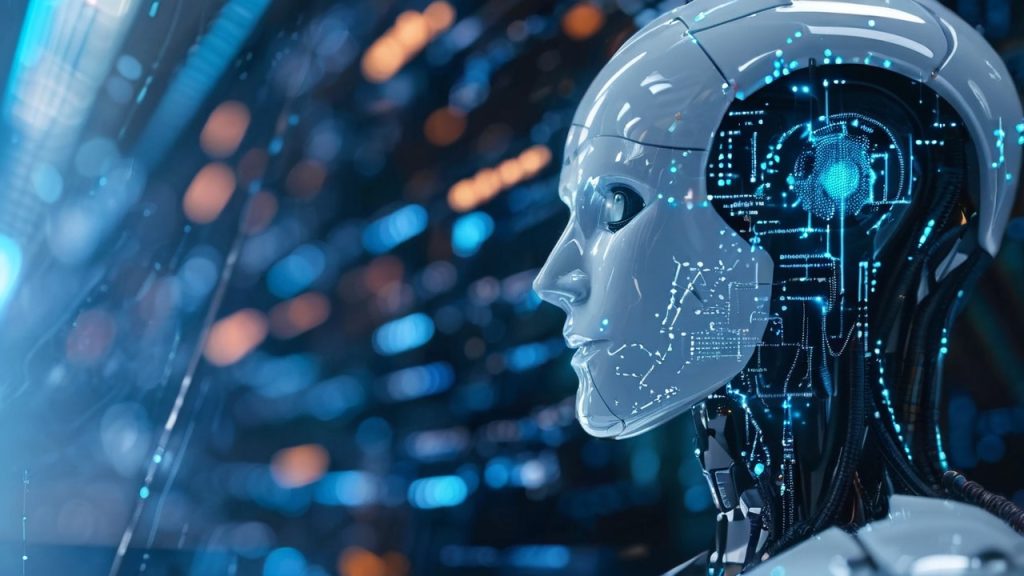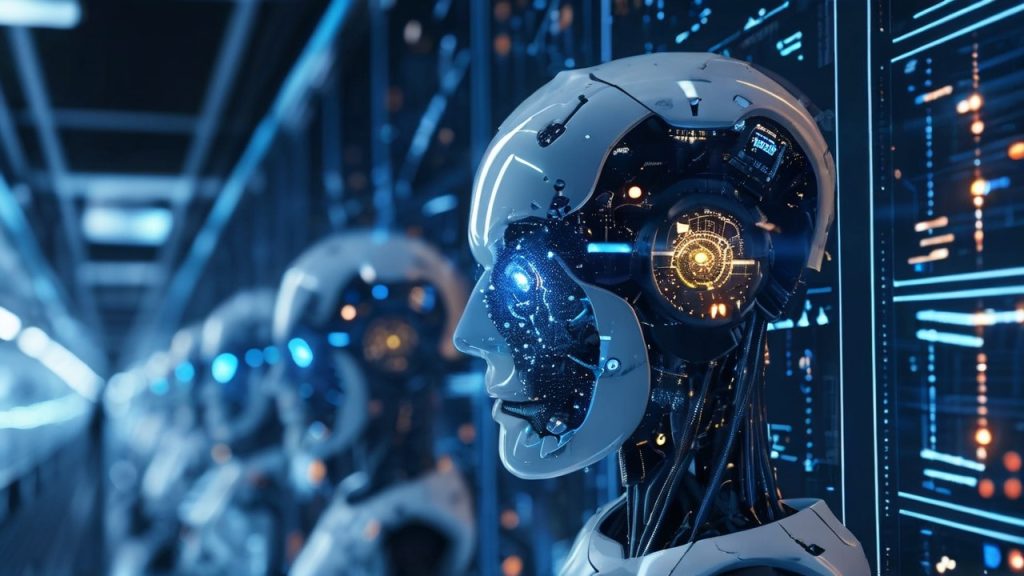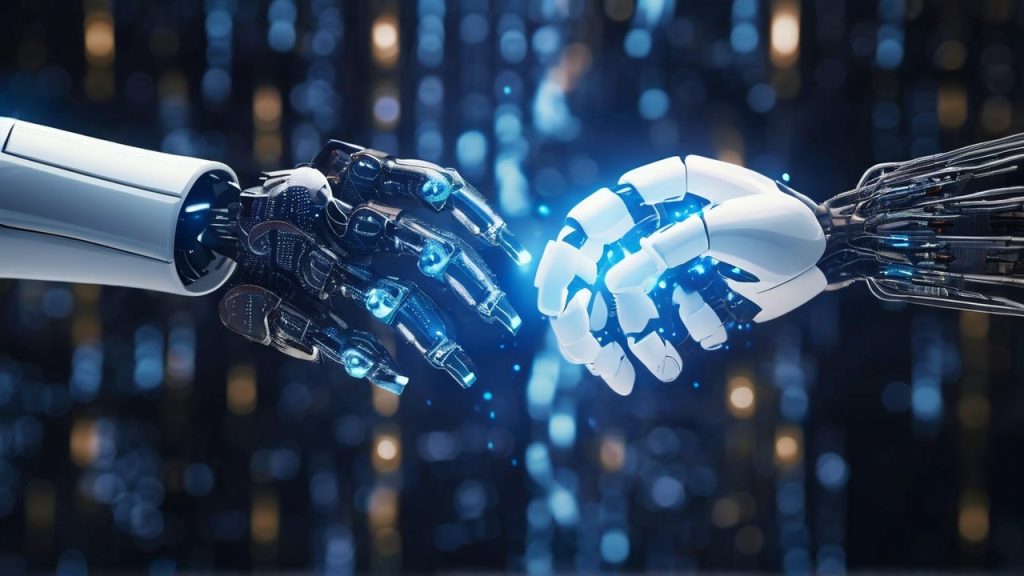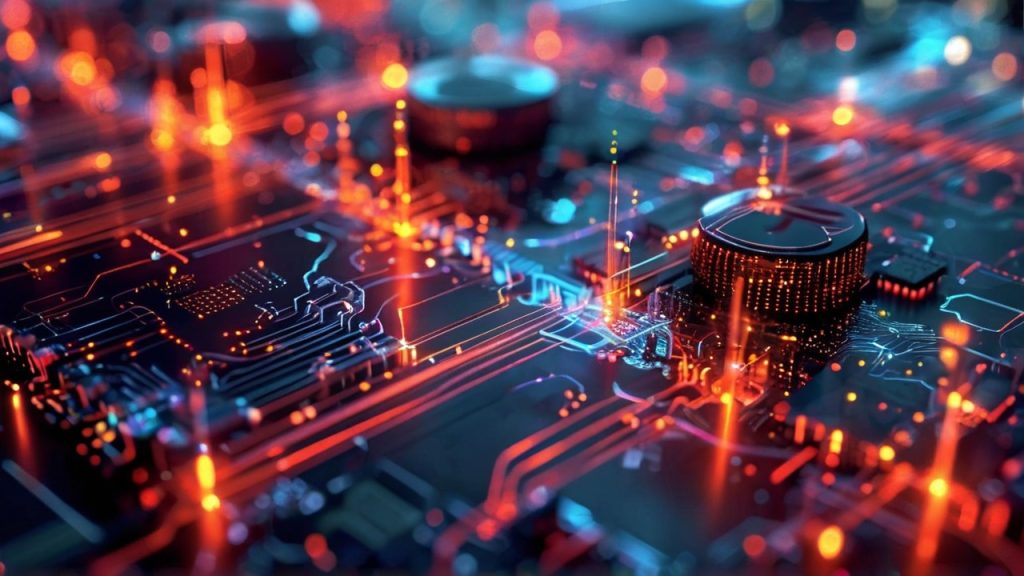How AI is Revolutionizing Cybersecurity

In an era where digital threats evolve at lightning speed, traditional cybersecurity measures are struggling to keep up. Enter Artificial Intelligence – the game-changer that’s reshaping the landscape of digital defense. 🛡️💻
But how exactly is AI revolutionizing cybersecurity? Imagine a world where threats are detected before they strike, incidents are resolved in milliseconds, and vulnerabilities are patched before hackers even know they exist. This isn’t science fiction; it’s the new reality of AI-powered cybersecurity. From enhanced threat detection to advanced authentication methods, AI is not just augmenting our defenses – it’s completely transforming them.
As we delve into the world of AI in cybersecurity, we’ll explore how this cutting-edge technology is bolstering our digital fortresses. We’ll uncover the ways AI is enhancing threat detection, automating incident responses, and even engaging in a high-stakes arms race against malicious AI. But it’s not all smooth sailing – we’ll also examine the challenges and limitations that come with this technological leap. Are you ready to discover how AI is becoming our strongest ally in the fight against cyber threats? Let’s dive in!
Understanding AI in Cybersecurity

Definition of AI in the context of cybersecurity
Artificial Intelligence (AI) in cybersecurity refers to the use of advanced algorithms and machine learning techniques to enhance digital defense mechanisms. It involves leveraging AI to analyze vast amounts of data, identify patterns, and make intelligent decisions to protect systems, networks, and data from cyber threats.
Key AI technologies used in cybersecurity
Several AI technologies play crucial roles in modern cybersecurity:
- Machine Learning (ML)
- Natural Language Processing (NLP)
- Deep Learning
- Behavioral Analytics
- Anomaly Detection
| Technology | Application in Cybersecurity |
|---|---|
| Machine Learning | Threat detection and classification |
| NLP | Analyzing security logs and reports |
| Deep Learning | Identifying complex attack patterns |
| Behavioral Analytics | Detecting insider threats |
| Anomaly Detection | Identifying unusual network activities |
The growing importance of AI in digital defense
AI has become increasingly vital in cybersecurity due to several factors:
- Exponential growth in data volume
- Sophistication of cyber threats
- Need for real-time threat detection and response
- Shortage of skilled cybersecurity professionals
By leveraging AI, organizations can significantly improve their security posture, automate routine tasks, and stay ahead of evolving cyber threats. As we delve deeper into the specifics, we’ll explore how AI enhances threat detection capabilities in the next section.
Enhanced Threat Detection

In the realm of cybersecurity, AI has revolutionized threat detection capabilities, offering unprecedented accuracy and speed. Let’s explore how AI enhances various aspects of threat detection.
Real-time monitoring and analysis
AI-powered systems can continuously monitor network traffic, user behavior, and system logs in real-time. This constant vigilance allows for immediate detection of potential threats, significantly reducing the time between a breach and its discovery.
Pattern recognition for anomaly detection
AI excels at identifying patterns and anomalies that might escape human analysts. By leveraging machine learning algorithms, cybersecurity systems can:
- Establish baseline behaviors
- Detect deviations from normal patterns
- Flag suspicious activities for further investigation
Predictive threat intelligence
AI’s ability to process vast amounts of data enables predictive threat intelligence. This proactive approach helps organizations stay ahead of emerging threats:
| Aspect | Description |
|---|---|
| Data sources | Threat feeds, dark web monitoring, social media |
| Analysis | Identifies trends and potential attack vectors |
| Output | Actionable intelligence for preemptive measures |
Behavioral analysis for insider threats
Insider threats pose a unique challenge, but AI can help by:
- Monitoring user activities across various systems
- Identifying unusual access patterns or data transfers
- Alerting security teams to potential insider risks
By leveraging AI in these areas, organizations can significantly enhance their threat detection capabilities, improving their overall security posture. This advanced threat detection forms the foundation for a robust incident response strategy, which we’ll explore in the next section.
Automated Incident Response

In the rapidly evolving landscape of cybersecurity, automated incident response has become a game-changer. By leveraging AI and machine learning, organizations can significantly improve their ability to detect, contain, and mitigate security breaches.
Rapid containment of security breaches
AI-powered systems can quickly identify and isolate compromised systems, preventing the spread of threats across the network. This rapid containment drastically reduces the potential impact of a security breach, minimizing data loss and downtime.
AI-driven triage and prioritization
One of the key advantages of AI in incident response is its ability to quickly analyze and prioritize threats. Here’s how AI-driven triage enhances cybersecurity efforts:
- Faster threat assessment
- Accurate risk scoring
- Intelligent alert correlation
- Reduced alert fatigue for security teams
Automated patch management
AI systems can streamline the patch management process, ensuring that vulnerabilities are addressed promptly. This automation helps organizations maintain a robust security posture by:
- Identifying critical vulnerabilities
- Prioritizing patches based on risk
- Scheduling and deploying updates with minimal disruption
- Verifying successful patch installation
Continuous system hardening
AI-driven incident response doesn’t stop at addressing immediate threats. It also contributes to ongoing system hardening through:
| Aspect | AI Contribution |
|---|---|
| Configuration management | Continuously optimizing security settings |
| Behavioral analysis | Identifying and mitigating potential weak points |
| Policy enforcement | Ensuring compliance with security best practices |
| Adaptive defense | Learning from past incidents to improve future response |
By leveraging AI for automated incident response, organizations can significantly enhance their cybersecurity posture, reducing the time and resources required to manage threats while improving overall security effectiveness.
Improved Vulnerability Management
In the realm of cybersecurity, AI is revolutionizing vulnerability management, offering unprecedented capabilities in identifying, assessing, and mitigating potential threats. Let’s explore how AI is enhancing this critical aspect of security.
AI-powered vulnerability scanning
AI-driven vulnerability scanning tools are transforming the way organizations detect and prioritize security weaknesses. These advanced systems can:
- Continuously monitor networks and systems
- Identify vulnerabilities in real-time
- Adapt to evolving threat landscapes
| Traditional Scanning | AI-Powered Scanning |
|---|---|
| Periodic scans | Continuous monitoring |
| Static rule-based | Adaptive and learning |
| Manual analysis | Automated insights |
Intelligent risk assessment
AI algorithms excel at processing vast amounts of data to provide intelligent risk assessments. This capability allows security teams to:
- Contextualize vulnerabilities within the organization’s unique environment
- Predict potential impact of exploits
- Prioritize risks based on likelihood and severity
Automated patch prioritization
One of the most significant advantages of AI in vulnerability management is its ability to automate patch prioritization. This process involves:
- Analyzing the criticality of vulnerabilities
- Assessing the potential impact on business operations
- Recommending optimal patching schedules
By leveraging AI for these tasks, organizations can significantly reduce their exposure to threats and improve their overall security posture. As we move forward, we’ll explore how AI is transforming authentication methods to further enhance cybersecurity defenses.
Advanced Authentication Methods

In the ever-evolving landscape of cybersecurity, AI is revolutionizing authentication methods, providing stronger, more reliable ways to verify user identities. Let’s explore how AI is enhancing various aspects of authentication.
Biometric Authentication Enhanced by AI
AI has significantly improved the accuracy and reliability of biometric authentication systems. By leveraging machine learning algorithms, these systems can now:
- Detect subtle differences in facial features
- Recognize voice patterns with higher precision
- Adapt to changes in biometric data over time
| Traditional Biometrics | AI-Enhanced Biometrics |
|---|---|
| Static data analysis | Dynamic pattern recognition |
| Fixed thresholds | Adaptive security levels |
| Vulnerable to spoofing | Advanced liveness detection |
Behavioral Biometrics for Continuous Verification
AI-driven behavioral biometrics offer a novel approach to authentication by continuously analyzing user behavior:
- Keystroke dynamics
- Mouse movement patterns
- Touchscreen interaction styles
- Device handling habits
This constant monitoring allows for real-time threat detection and immediate response to suspicious activities.
AI-Driven Multi-Factor Authentication
AI is enhancing multi-factor authentication (MFA) by:
- Analyzing context and risk levels to determine appropriate authentication factors
- Predicting and preventing potential account takeovers
- Optimizing the balance between security and user experience
By intelligently combining various authentication methods, AI-driven MFA provides a robust defense against unauthorized access while minimizing friction for legitimate users.
As we move forward, we’ll explore how AI is not just enhancing our defenses but also being weaponized by cybercriminals, creating a new battleground in the world of cybersecurity.
AI vs AI: The Cybersecurity Arms Race

AI-powered attacks and defenses
As AI technology advances, both cybercriminals and security teams are leveraging its power, creating a high-stakes arms race in the cybersecurity landscape. AI-powered attacks are becoming more sophisticated, using machine learning algorithms to evade traditional security measures and exploit vulnerabilities at an unprecedented scale.
On the defensive side, AI is being used to enhance threat detection, automate incident response, and improve overall security posture. Security teams are employing AI to analyze vast amounts of data, identify patterns, and predict potential threats before they materialize.
Adversarial machine learning
Adversarial machine learning is a critical aspect of the AI cybersecurity arms race. This technique involves creating inputs designed to deceive or manipulate AI systems, potentially compromising their effectiveness. Cybercriminals use adversarial attacks to:
- Evade detection systems
- Bypass authentication methods
- Exploit vulnerabilities in AI models
To counter these threats, security teams are developing robust AI models that can:
- Identify and mitigate adversarial attacks
- Continuously adapt to new threats
- Improve resilience against manipulation attempts
Ethical considerations in AI-driven cybersecurity
The use of AI in cybersecurity raises important ethical questions:
| Ethical Concern | Description |
|---|---|
| Privacy | AI systems may collect and analyze vast amounts of personal data |
| Bias | AI models may inadvertently perpetuate or amplify existing biases |
| Accountability | Determining responsibility for AI-driven security decisions |
| Transparency | Ensuring AI decision-making processes are explainable and auditable |
Addressing these ethical concerns is crucial for maintaining trust and ensuring responsible AI deployment in cybersecurity.
The future of AI in cyber warfare
As AI continues to evolve, its role in cyber warfare will become increasingly significant. Future trends may include:
- AI-driven autonomous cyber defense systems
- Advanced predictive threat intelligence
- AI-powered cyber deception techniques
- Quantum computing integration for enhanced cryptography and threat analysis
The ongoing AI arms race in cybersecurity underscores the need for continuous innovation, collaboration, and ethical considerations to stay ahead of evolving threats and protect digital assets effectively.
Challenges and Limitations of AI in Cybersecurity

As AI continues to revolutionize cybersecurity, it’s crucial to acknowledge the challenges and limitations that come with its implementation. Let’s explore some key issues that security teams face when integrating AI into their cybersecurity strategies.
False Positives and Alert Fatigue
One of the most significant challenges in AI-driven cybersecurity is the issue of false positives and the resulting alert fatigue. While AI systems are highly efficient at detecting potential threats, they can sometimes be overly sensitive, leading to:
- Numerous false alarms
- Overwhelming security teams with alerts
- Reduced response time to genuine threats
This phenomenon can be illustrated in the following table:
| Issue | Consequence | Potential Solution |
|---|---|---|
| False Positives | Alert Fatigue | Fine-tuning AI algorithms |
| Overwhelming Alerts | Reduced Efficiency | Implementing alert prioritization |
| Missed Real Threats | Increased Vulnerability | Combining AI with human expertise |
Data Privacy Concerns
The use of AI in cybersecurity often requires access to vast amounts of sensitive data, raising significant privacy concerns:
- Collection and storage of personal information
- Potential for data breaches
- Compliance issues with data protection regulations
Skills Gap in AI Cybersecurity Professionals
As AI becomes more prevalent in cybersecurity, there’s a growing need for professionals who understand both AI and cybersecurity. This skills gap presents several challenges:
- Shortage of qualified personnel
- Difficulty in implementing and maintaining AI systems
- Increased vulnerability due to improper AI usage
Integration with Legacy Systems
Many organizations face challenges when trying to integrate AI-powered cybersecurity solutions with their existing legacy systems:
- Compatibility issues
- Performance bottlenecks
- Increased complexity in system management
Despite these challenges, the benefits of AI in cybersecurity are undeniable. As we move forward, addressing these limitations will be crucial in maximizing the potential of AI to protect against evolving cyber threats.
Conclusion
AI has become a game-changer in the cybersecurity landscape, offering powerful tools to combat evolving threats. From enhanced threat detection to automated incident response, AI-driven solutions are revolutionizing how organizations protect their digital assets. The integration of AI in vulnerability management and advanced authentication methods further strengthens security postures, making it increasingly difficult for cybercriminals to breach defenses.
As we witness the ongoing cybersecurity arms race between AI-powered defense systems and malicious actors leveraging AI for attacks, it’s crucial to recognize both the potential and limitations of this technology. While AI brings unprecedented capabilities to the field, it’s not a silver bullet. Organizations must remain vigilant, continuously updating their AI systems, and maintaining a balance between automated solutions and human expertise to stay ahead in the ever-evolving world of cybersecurity.

